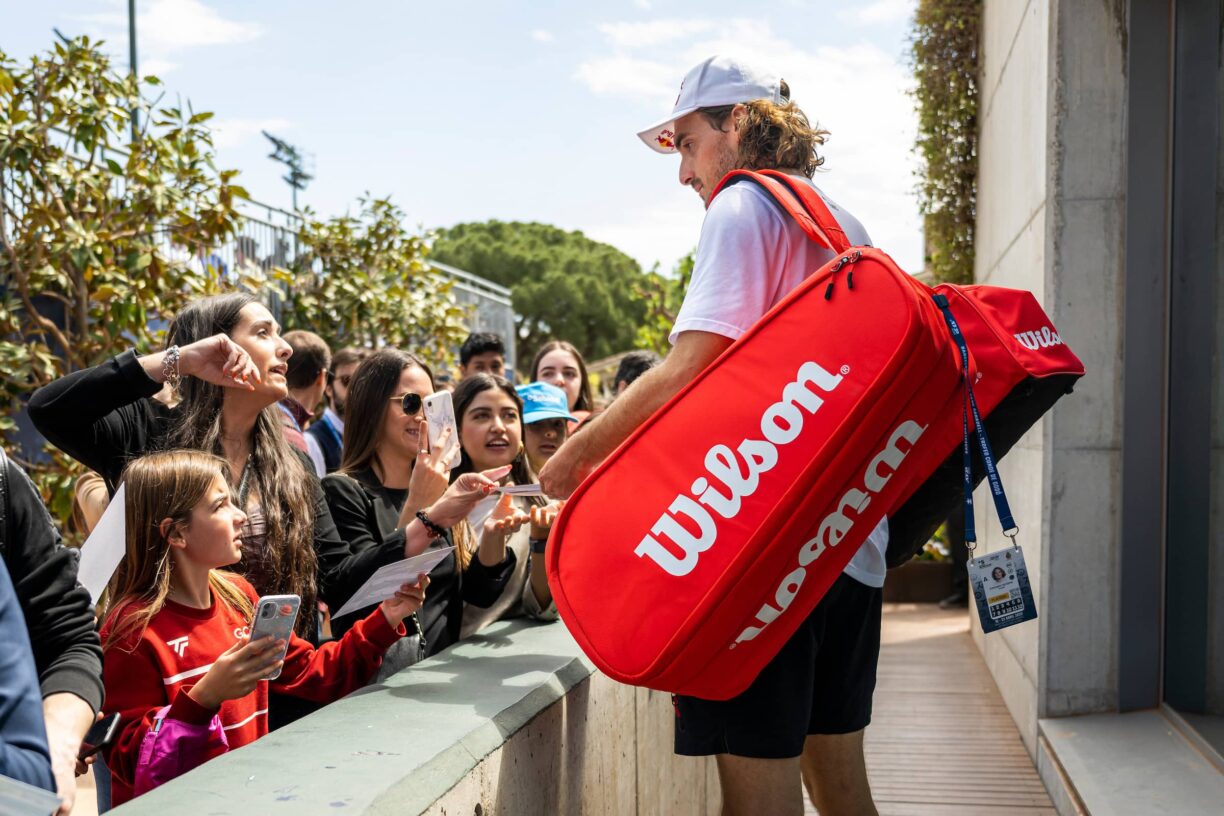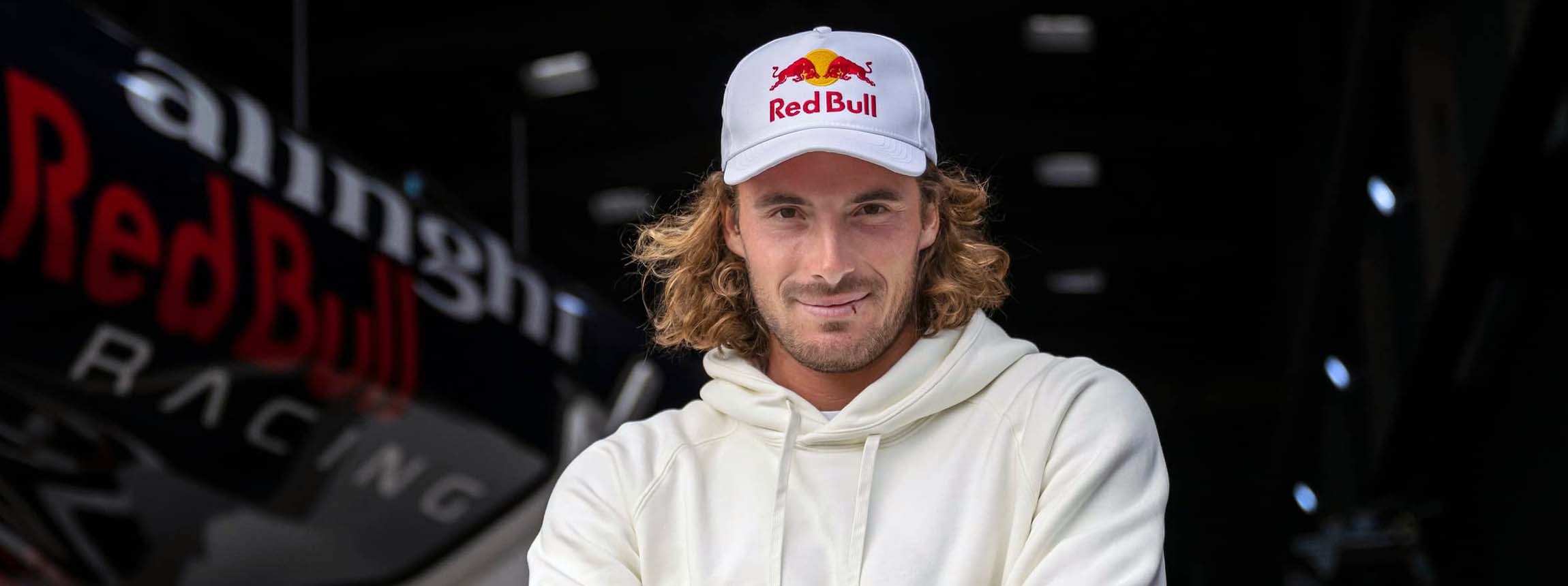It is the tennis grass-court season and Wimbledon – one of the most iconic tournaments in the sport – started on Monday, July 3 with Greek star Stefanos Tsitsipas beginning the Grand Slam event on Tuesday, July 4 in a big match against former US Open champion Dominic Thiem.
The heavyweight clash is the highlight of the first round in the men’s competition that will finish on Sunday, July 16 with the likes of Italian Matteo Berrettini – the 2021 men’s finalist – and reigning women’s champion Elena Rybakina of Kazakhstan also out for title glory.

Here is what the 24-year-old Tsitsipas had to say a few days ahead of Wimbledon including his strengths on the court and techniques as well as his highly appreciated “Zen” feeling:
The perfect court coverage is something tennis players are always aiming for. Can you describe the importance of this crucial tennis asset?
Court coverage is an essential asset in tennis because it allows players to effectively reach and return shots from all areas of the court.
It’s important to work on this aspect as a tennis player and this is why I have to surround myself with a great technical team which includes my fitness trainer, my coach and my physio.

Your court coverage has always been impressive because of your physical abilities on the court. Apart from the fitness, what else do you need for the perfect court coverage?
Apart from fitness, having a deep understanding of the game and the opponent’s tendencies is crucial for perfect court coverage. Prior to any match, my coach and I always study the opponent’s pattern so that I can try to anticipate the next move.
Does your talent help you in terms of court coverage or is this something that comes through hard work only?
Talent certainly plays a role, as it provides a foundation for developing court coverage skills. I think it’s hard to be perfect at something but, by striving for it, you can certainly reach excellence through deliberate practice.
One of your standout shots is your forehand. What forehand grip do you use and do you sometimes change the grip during rallies?
My grip is quite “flat”, as we say in tennis, but I am still able to generate power and topspin while maintaining control. During rallies, I generally stick to my preferred grip, but minor adjustments can be made depending on the situation and the type of shot I want to execute.
Your forehand is very explosive but, at the same time, you do it very elegantly. What is the secret behind that combination?
I have to be honest, it is not something I deliberately think about. My goal is to have a good contact point and, throughout the years of practice, I have developed such a strong and as you say “elegant” forehand which I am humbled by.
What makes the perfect forehand shot for you?
For me, the perfect forehand shot combines power, accuracy, and spin, involving good footwork, positioning, and timing. My favourite forehand is the inside-out forehand, which I follow up at the net, searching for the volley depending on the situation.
Can you also recognise the perfect forehand shot by the sound when the ball leaves the racket?
Yes, absolutely. It’s a sweet sound and an even sweeter feel. Clean and crisp.
Your service game is another ingredient that makes you stand out. What is most important when serving: fluid movement, relaxation or concentration?
When serving, my rhythm is very important but the most important part is the toss. If I am able to repeatedly get a good toss, then I will most likely hit a good serve and hope for the “elegance”.
In Madrid against Thiem, you produced an unbelievable 39 first serves in a row. You seemed to be in a flow. What role did your mental state play in this?
I have to say that during the match I was not aware of how many first serves I had made but now, looking back at it, I can remember feeling very Zen and focused, some call it flow. Once in this mental state, everything slows down and all you can see is the ball. I strive for this every match.
Your serves are often a mix of hard strokes and softer kicks. When do you normally decide in what way you will serve?
How and where to serve will depend on several factors. Some being who I am playing against, what surface I am on, what the weather is like but, mainly, how I am feeling on that day.
It is Wimbledon next. The serve traditionally plays an important role on grass. Is it still the most important role?
On grass, the serve remains crucial, but other factors such as movement and adaptability also come into play. Grass courts can be faster, making it more challenging to defend against powerful serves.
However, players who can adjust their footwork and quickly adapt their game to the lower bounce and slick surface can gain an advantage. So, while the serve remains important, the all-around game becomes vital on grass.
In which way are you adjusting your game when it comes to grass-court tennis?
Footwork is key, grass can be very physical as you are always having to stay low. Obviously, I am a fan of serve and volley so therefore I would like to keep working on that part of my game.
